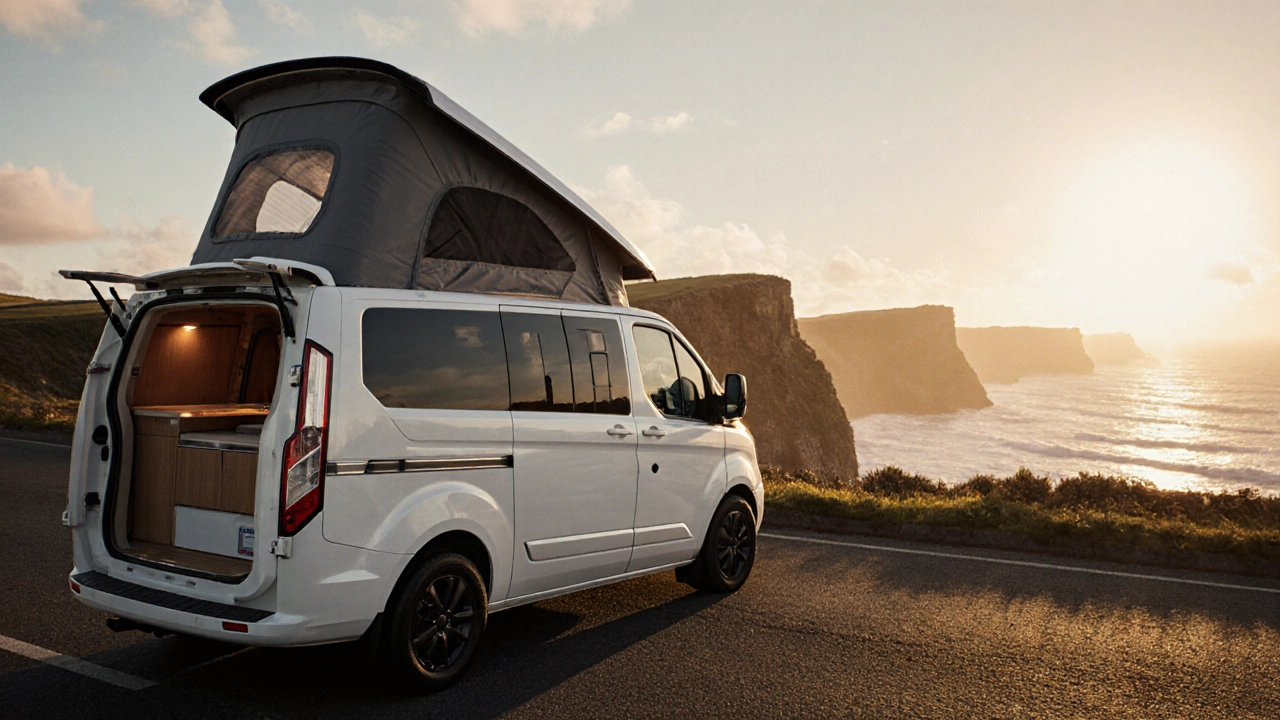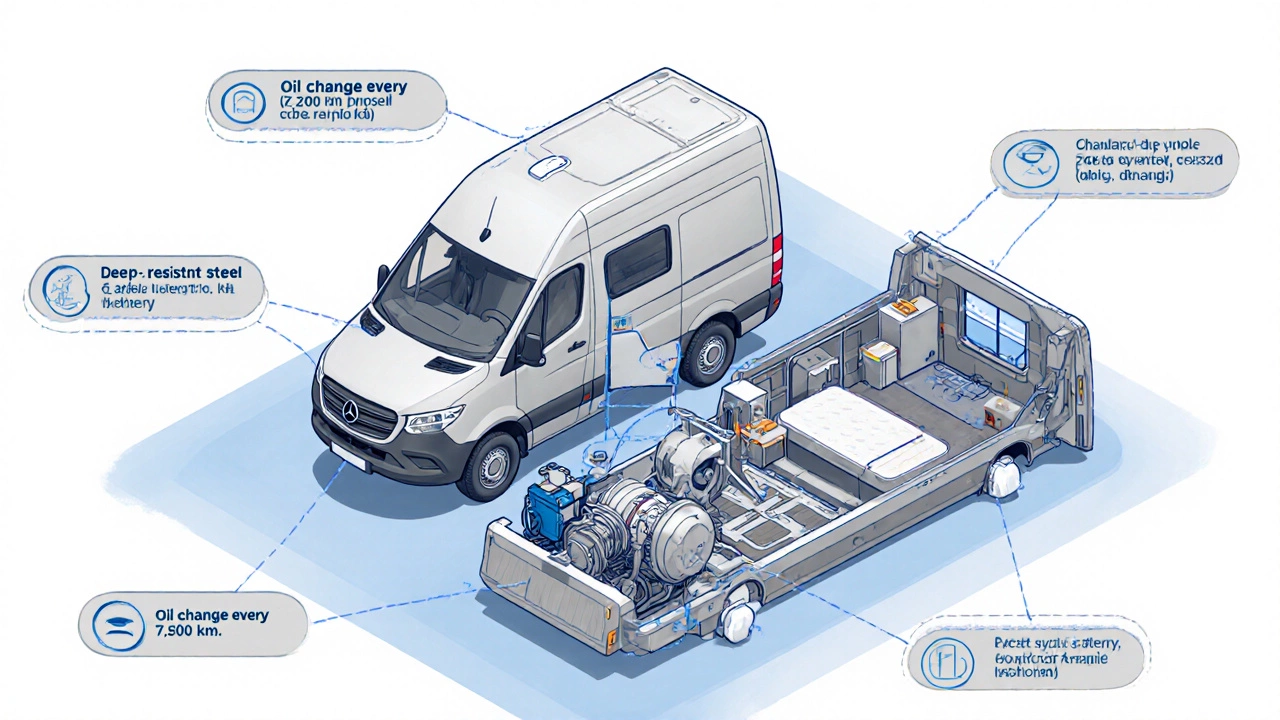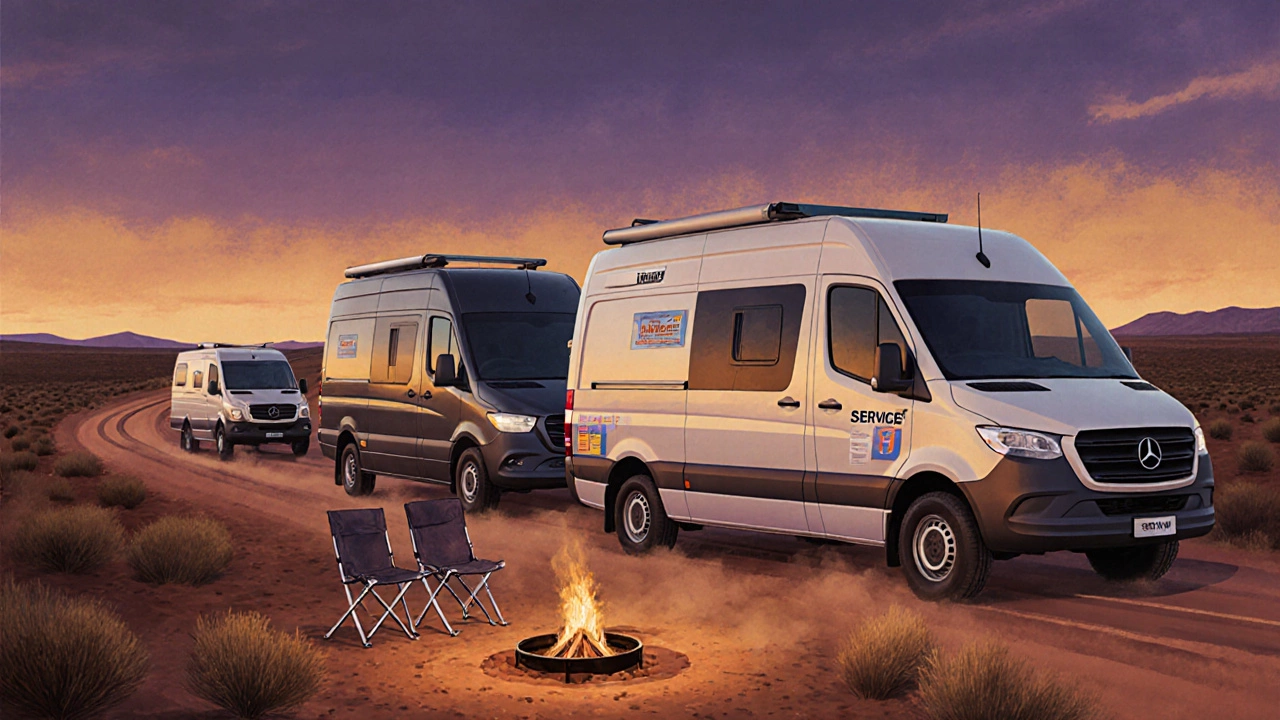Campervan Lifespan: How Long Does a Campervan Really Last?
 Oct, 25 2025
Oct, 25 2025
Campervan Lifespan Calculator
Estimate Your Campervan's Lifespan
Based on industry data from vehicle manufacturers and fleet operators, this calculator helps you understand how your maintenance habits and driving conditions affect your campervan's longevity.
Your Campervan Lifespan Estimate
Estimated lifespan: 0 years
Estimated mileage: 0 km
Note: This is an estimate based on industry averages. Actual lifespan depends on individual care and usage patterns.
When you’re planning a road‑trip or thinking about hiring a vehicle for a family adventure, the first question that pops up is: campervan lifespan. You want a rig that won’t break down halfway through the journey and that will still feel fresh after years of use. Below we break down everything that decides how long a campervan stays on the road, from the core components to the daily habits that add years to its life.
What Exactly Is a Campervan?
Campervan is a compact, self‑contained vehicle that combines a passenger cabin with basic living facilities such as a bed, kitchenette and storage. Unlike a full‑size motorhome, a campervan is built on a van chassis (often a Ford Transit, Toyota Hiace or Mercedes Sprinter) and keeps the driving dynamics of a regular van while offering a cozy sleeping space. The design aims to balance mobility, fuel efficiency, and comfort, making it a popular choice for short‑term hires and weekend get‑aways.
How Long Do Campervans Typically Last?
There isn’t a one‑size‑fits‑all answer, but most industry data points to a useful life of 10‑15 years or 150,000‑200,000 kilometres (about 93,000‑124,000 miles) for a well‑maintained campervan. Some owners report reaching 250,000 kilometres when they keep up with service schedules and avoid harsh off‑road use. The key is looking at the major wear points - engine, transmission, chassis, and the living‑area fittings - rather than just the calendar age.
Major Factors That Influence Longevity
- Engine health: A robust diesel or modern petrol engine can easily hit 300,000 km if oil changes, filter swaps and cool‑ant checks are performed on schedule.
- Transmission type: Manual gearboxes tend to last longer under heavy loads compared to some early automatic units, but newer torque‑converter automatics built for commercial vans have proven durability.
- Chassis and suspension: The van’s frame absorbs the stress of rough roads. Corrosion‑resistant steel and regular under‑carriage cleaning keep the chassis from rusting, especially in coastal areas like Perth.
- Battery and electrical system: Deep‑cycle batteries that power lights, fridge and water pump need proper charging. Over‑discharging shortens life dramatically.
- Living‑area wear: Fabrics, mattresses and kitchen fixtures can age faster than the mechanical parts. Replace cushions and seal leaks to avoid water damage.
- Maintenance schedule: Following the manufacturer’s service interval (often every 10,000 km) is the single biggest longevity booster.
- Driving habits: Frequent short trips don’t let the engine reach optimal temperature, which can cause oil breakdown. Long, steady highway miles are kinder to the power‑train.
- Environmental exposure: UV rays degrade interior plastics; salty air accelerates rust. Using covers and regular washing mitigate these effects.
Typical Mileage Expectations by Build Type
| Platform | Engine Type | Average Lifespan (km) | Typical Warranty (years) |
|---|---|---|---|
| Ford Transit Custom | 2.0 L EcoBlue Diesel | 180,000 - 220,000 | 5 |
| Toyota Hiace | 2.8 L Turbo Diesel | 200,000 - 250,000 | 4 |
| Mercedes‑Sprinter | 2.1 L 4‑Cylinder Diesel | 220,000 - 300,000 | 5 |
| Volkswagen Crafter | 2.0 L TDI Diesel | 180,000 - 230,000 | 4 |

Maintenance Checklist to Maximise Life
- Change engine oil and filter every 7,500-10,000 km.
- Inspect and replace air filter at least every 15,000 km, more often in dusty regions.
- Run the battery tender during off‑season storage; recharge fully before the next trip.
- Check coolant level and condition semi‑annually; replace every 80,000 km.
- Lubricate chassis bushings and suspension points every 20,000 km.
- Inspect roof seals, window gaskets, and door hinges for cracks; reseal with marine‑grade silicone.
- Service the gas‑powered appliances (if fitted) annually - a faulty stove can cause carbon buildup.
- Follow the vehicle’s service bulletin for software updates; modern ECUs benefit from tuning patches.
Signs Your Campervan Is Nearing the End of Its Prime
- Excessive oil consumption or frequent smoke from the exhaust.
- Transmission slipping or harsh shifting.
- Chassis rust that has penetrated structural members.
- Water leaks that cause mould in the living area.
- Battery that can’t hold a charge beyond a few hours.
- Frequent high‑cost repairs that exceed 10 % of the vehicle’s market value.
If you notice two or more of these, start budgeting for a replacement or a major overhaul.
Extending the Life of a Hire Fleet
If you run a campervan hire business around Perth, the bottom line depends on keeping your fleet on the road longer than the competition. Here are three practical steps:
- Standardise the fleet: Using the same model (e.g., Sprinter) simplifies parts inventory and lets your mechanics specialise.
- Implement a pre‑rental inspection: Quick visual checks for tire pressure, fluid levels and interior damage catch problems before they snowball.
- Offer optional maintenance packages: Encourage renters to add a $150 service fee that covers oil changes after 10,000 km; you get revenue and the vehicle stays healthy.

Campervan vs Motorhome: Which Offers a Longer Life?
Motorhome is a larger, purpose‑built recreational vehicle typically featuring a dedicated chassis, integrated bathroom and more powerful engine options. Because motorhomes are engineered for heavy‑duty use, their components often have longer OEM warranty periods (up to 7 years) and higher mileage caps (300,000 km+). However, the added weight and complexity mean higher maintenance costs. In a pure "years on the road" comparison, a well‑maintained motorhome can outlive a campervan by 2‑4 years, but the cost per extra year is usually larger.
Cost of Ownership Over the Lifespan
When you add up purchase price, insurance, road tax (which in Western Australia is based on vehicle weight and emissions), fuel, and regular service, a 12‑year‑old campervan that started at A$55,000 might cost you roughly A$90,000 in total ownership. Break that down:
- Purchase: A$55,000
- Insurance (12 years): A$9,600
- Road tax (average A$350 / yr): A$4,200
- Fuel (assuming 12 L/100 km, 200,000 km, $1.80/L): A$43,200
- Maintenance & parts (average A$4,500 / yr): A$54,000
Adding these gives a rough total of A$166,000, but note that many maintenance costs can be deferred with diligent care, and resale value after 12 years often lands around A$15,000-20,000, offsetting the total spend.
Frequently Asked Questions
How many kilometres can a campervan safely travel?
Most manufacturers rate their diesel engines for 200,000-250,000 km with regular service. Exceeding that is possible, but you’ll need more intensive inspections of the timing belt, fuel injectors and suspension.
Does renting a campervan affect its lifespan?
Rental use adds mileage quickly, but professional hire companies usually enforce strict service intervals and perform pre‑ and post‑rental checks, which can actually keep a fleet healthier than a privately owned vehicle that sits idle for years.
Can I extend my campervan’s life by using a gas engine?
Gas (LPG) is mostly used for heating and cooking, not propulsion. However, using LPG for the cooker reduces load on the battery and can lower fuel consumption slightly, indirectly helping the engine run cooler.
What are the biggest signs of rust on a campervan?
Look for bubbling paint, flaking metal around wheel wells, under the rear door, and along the roof edges. A simple magnet test can confirm if the steel has thinned due to corrosion.
Is it worth buying a used campervan with high mileage?
If the service history is complete, the engine has been rebuilt or has a recent timing belt replacement, a high‑mileage unit can be a bargain. Focus on the condition of the chassis, suspension and interior fittings rather than just the odometer.
Bottom Line: Planning for a Long‑Lasting Campervan Experience
Whether you’re hiring for a summer road trip or buying your first home‑on‑wheels, the lifespan of a campervan hinges on three pillars: mechanical upkeep, protective care for the living space, and sensible driving habits. Stick to the service schedule, keep the vehicle clean and sealed, and avoid repeatedly overloading the roof rack, and you’ll see 150,000 km or more of reliable adventures. And if you’re a hire operator, a disciplined inspection routine and a well‑trained tech team can push the fleet’s average life well beyond the industry norm.